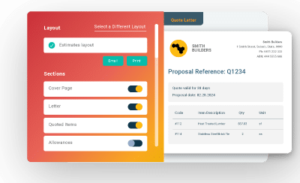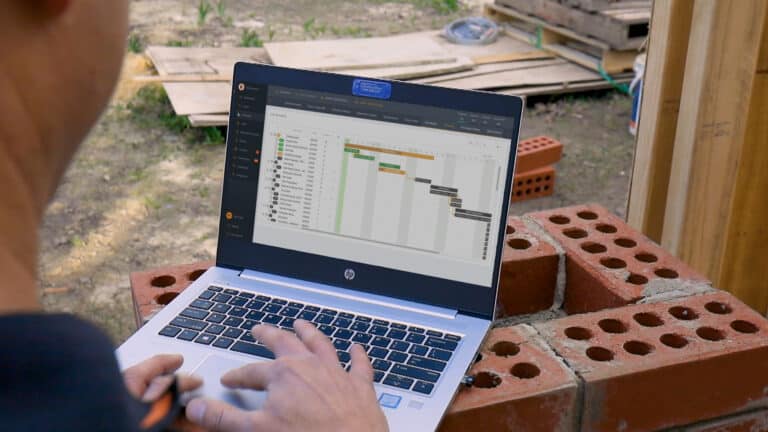5 minute read
While estimating construction project costs is familiar to many, putting together a schedule for the project in a logical way can be more difficult. To it right, you must predict how long it will take to complete certain tasks, put them in the correct order, and connect them appropriately to their predecessor and successor tasks in what many refer to as a house construction timeline.
There are a few ways to predict how long the construction process will take: experience, standard labor calculators, and asking subcontractors. We’ll take a look at these three options to estimate construction time and consider external conditions that may affect the ultimate duration of the home building process.
Past experience in the construction process
The best way to estimate the amount of time it will take to complete a project is to base it on a similar floor plan. The data will be more accurate than labor calculators or other estimation methods since the data is based on real activities.
You might have to do some calculations when making comparisons for your home building timeline. For example, if laying 100 linear feet of 5-foot-tall brick wall takes your crew 40 hours, then you can estimate that it will take your crew 20 hours to lay 50 linear feet of a similar brick wall.
The accuracy of your estimate will depend on the accuracy of the records of actual construction from past projects. The more detailed your record-keeping, you’ll more easily be able to extrapolate an estimate. It pays to keep detailed records, especially when it comes to tracking productivity.
Standard labor calculators
If you are a new company or don’t have prior experience to determine how long a project will take, you can refer to standard labor calculators to get an idea. There are many labor calculators available, some provided by professional organizations, like RSMeans. RSMeans gathers cost and duration information on projects around the United States and publishes it as a cost index that many contractors rely on when estimating the cost to build a house.
You can use standard labor calculators to estimate the amount of time it might take for a full or partial project. For example, you can get an approximate time estimation for a two-story commercial office building, or you can find out how long it will take a plumber to lay 100 feet of ¾ inch copper piping. Using this information, you can determine how long a project will take by breaking it up into smaller sections and scopes within the home construction process.
It’s important to note that standard labor calculators may not reflect durations and costs in the region the project is located. You may need to add or subtract time to reflect a more accurate estimate.
Ask an expert in the home construction process
A subcontractor can provide the average time for a particular task. Once the subcontractors are selected, the general contractor asks them to provide a schedule for their work, and the general contractor incorporates all the subs schedules together.
Because subcontractor work is so fundamental to each construction phase of the home building process, they represent expert advice in determining a home building timeline.
Conditions that may affect the home building process
Even the most complete project schedule can be affected by several outside factors.
Material delays are a hot topic now in construction. There is a domino effect when materials aren’t on-site causing delays in all phases of the building process.
Weather conditions can also affect the progress of work on–site. Severe rain, cold or heat can impede the productivity of workers on-site, causing delays in the schedule. Crews may also have to repair work in areas damaged by the weather, further delaying completion.
Labor shortages or unavailability affects progress on a construction project. When a contractor doesn’t send enough workers to the job site to complete the work needed, everything gets delayed. A subcontractor may need to send workers to another project to combat delays there, thus causing more issues on your project. It can be a vicious cycle.
While these types of delays can be managed to a certain extent, many of them are out of a contractor’s control. This is why schedules always change. As long as the completion date stays the same, small delays are usually tolerated. But when a delay affects the critical path of the project or the path of tasks that are required to meet the completion deadline, then problems can occur. Contracts may include liquidated damages clauses if the completion date is not met, which is why contractors should include as much wiggle room as possible in their schedules to accommodate for any unforeseen delays.
Conclusion
To put together an accurate schedule for a construction project, the best source is project data from similar jobs performed by the same crews. But, if you don’t have that information or you are early in your career, using labor calculators or asking subcontractors to provide their own schedules are two ways to create a schedule. Ask the project team to review the schedule to see if it makes sense to everyone before publishing it.
There will always be outside factors that can affect a construction project’s completion. Build-in float time for potential material delays, bad weather, and labor shortages. This will help ensure that you meet the scheduled timeline of the project. A good starting point could be this article which tells you more about our easy-to-use construction scheduling software for residential builders, remodelers, and contractors.
Want to know more about Buildxact?
Construction scheduling software, like Buildxact, can help you estimate your construction time more efficiently, and manage scheduling changes quickly whenever they arise
Book a demo to see how Buildxact can transform your residential construction business, or get started with a 14 day free trial.














